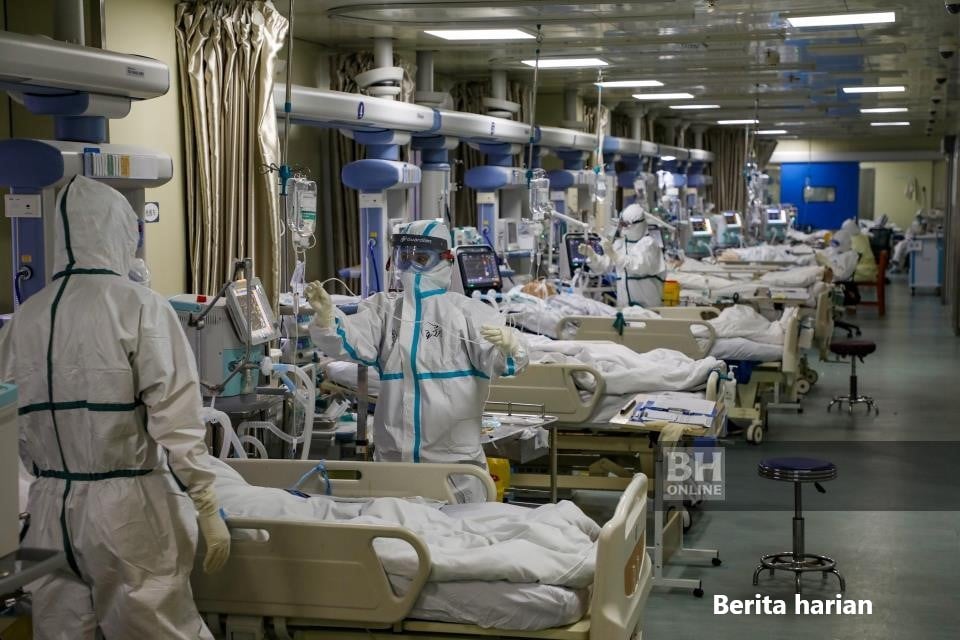TREATMENT PERFORMANCE OF COVID-19 PATIENTS IN MALAYSIA
02/12/2020
Since the emergence of COVID-19 pandemic, the Ministry of Health Malaysia (MOH) has developed guidelines related to COVID-19 treatments which are updated timely aligned to the recommendations from international organisations such as the World Health Organization (WHO), scientific studies and treatment effectiveness for patients in Malaysia and abroad. There is no specific medicine to treat COVID-19. Currently, COVID-19 patients are being treated according to COVID-19 category, patient's clinical status, laboratory and imaging test results.
The treatment plans for COVID-19 patients in Malaysia are based on 5 levels of severity or clinical category of patients:
- Category 1: No symptom
- Category 2: Symptomatic without lung infection
- Category 3: Symptomatic with lung infection
- Category 4: Symptomatic with lung infection and need oxygen supplementation
- Category 5: Critical patients with multiple organs complications
Based on global data and other countries’ experience, most COVID-19 patients are asymptomatic or with mild symptoms. For Malaysia, as of 2 December 2020, 72% of COVID-19 patients are in :
- Category 1,
- Category 2 (19%),
- Category 3 (6%),
- Category 4 (2%) and
- Category 5 (1%).
Generally, there is no specific treatment for COVID-19 patients in Category 1. As of Category 2 and 3, the patients will be given symptomatic treatments such as medicines to relieve fever, cough and flu. Furthermore, care will be given to patients to optimise their nutritional status and maintain good blood circulation. The use of more specific types of medications such as anti-virals, immuno-modulatory (to reduce inflammatory response) and anti-coagulants (to prevent clotting) are meant for more critically ill COVID-19 patients such as Category 4 and 5.
In Malaysia, all patients who are confirmed positive for COVID-19 including those who are asymptomatic will be treated at the designated treatment centres which are either in the hospital or Quarantine and Low Risk COVID-19 Treatment Centre (Pusat Kuarantin dan Rawatan Berisiko Rendah COVID-19, PKRC). This means all COVID-19 patients are isolated from the community. This approach is effective in reducing the risk of COVID-19 infections from spreading to the community. At the treatment centres, the clinical progress of COVID-19 patients will be closely monitored in term of vital signs, blood tests and imaging according to patients’ needs. These help early detection and prompt treatment to prevent patients deterioration, especially patient from Category 3 into Category 4 and 5.
Until 2 December 2020, the total or accumulative number of patients in Category 4 and 5 who have received critical care treatment throughout Malaysia is 1,164. Amongst,
- 62% of patients have recovered and allowed to go home,
- 11% are still receiving treatment in ICU,
- 9% have discharged from ICU but still under monitoring in normal ward.
- Only 18% have died due to COVID-19 complications.
Most deceased COVID-19 patients are those who aged 50 and above, had comorbidities or other diseases such as high blood pressure, diabetes etc.
These initiatives taken by MOH have successfully increased the recovery rate in Malaysia to 83.8% compared to the
- Global recovery rate (69.3 %),
- Italy (50.2%),
- United States (59.1%), and
- Asian countries such as Myanmar (77.6%) and Laos (66.7%).
In fact, the death rate of Malaysia is 0.5%, much lower than the global death rate of 2.3%. This information is based on international data obtained at worldometers.info and coronatracker.com.
MOH always ensure the delivery of healthcare services, especially for COVID-19 treatment is at optimal level. Currently, the COVID-19 vaccine is yet available, hence, compliance to all the SOPs is the best vaccine to break the COVID-19 chain.
Datuk Dr. Hj. Rohaizat b. Hj. Yon
Deputy Director of General (Medical)
Ministry of Malaysia


